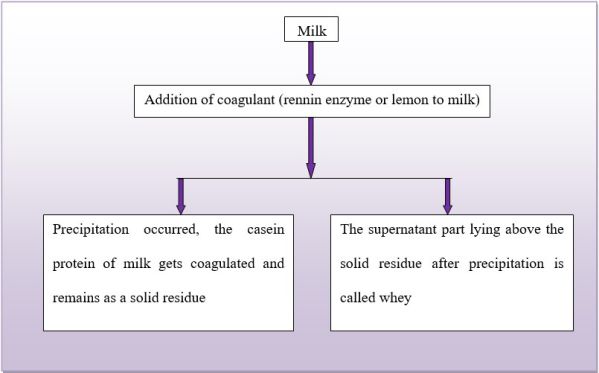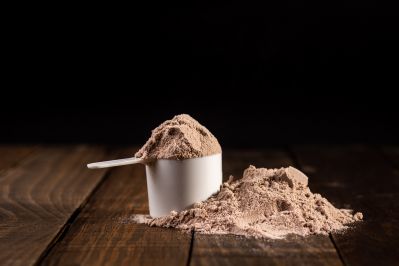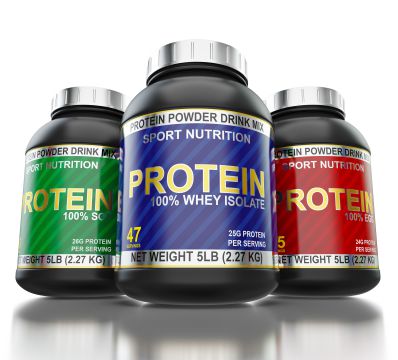It is well known to all that milk is one of the most important and nutritionally enriched food stuffs. The nutritional composition of milk is found in a very well-balanced manner where proteins, fats, vitamins, minerals are present in proper ratio. Basically, it is rich in proteins (various amino acids) and considered as a protein rich food. It has found that milk is primarily composed of two types of proteins that are casein and whey protein. Casein is the main protein (phospho protein) of milk and the watery portion of milk is known as whey. Proteins which are present in whey are termed as whey protein which includes α‐lactalbumin, β‐lactoglobulin and immunoglobulin. Preparation of cheese helps to separate the casein and whey protein. The below chart will make the phenomenon clearer –

Whey protein in considered as a complete and easily digestible protein. It contains all the essential amino acids and has great health importance.
Health benefits
Effect on muscle
- Whey protein acts as building block of muscle and helps to strengthen the muscle as it provides all essential amino acids and proteins required for muscle growth
- It also helps to increase the synthesis and releasing of anabolic hormones that stimulate the growth of muscle and enhances muscle mass
- It contains several branched chain amino acids and it is rich in leucine, which helps to increase the synthesis of muscle proteins (actin and mayosin) at genetic and molecular level which is related with improving muscle functions

Effect on weight reduction
- It helps in weight reduction. It is considered as a low carbohydrate, low fat and protein rich diet hence consumption of whey would not provide too much of calories
- Consumption of whey protein helps to improve the satiety. It has found that obese individual has a positive energy balance where energy intake is greater than energy expenditure resulting in weight gain. Whey protein helps to reduce food intake as it inhibits the feeling of hunger hence helps to balance the energy intake and expenditure which is associated with proper weight management
- It also helps to increase the metabolic rate hence increases the energy expenditure, which is an effective way for reducing weight. So, people who wants to lose weight can consume whey protein
Antimicrobial properties
- Lactoferrin content of whey protein acts as the antimicrobial factor and helps in complete destruction of virus and bacteria within body
- It helps to stimulate the defense mechanism of the body by enhancing phagocytosis
- Whey protein contains several antibodies like IgA, IgG, IgM which binds with specific harmful antigen and prevents various harmful infectious diseases

Effect on heart
- Generally, prolong consumption of fat is associated with increasing the blood cholesterol and triglyceride level that are responsible for developing atherosclerosis, one of the dangerous etiological factors for cardiac disease
- On the other hand, consumption of too much glucose is also harmful. It has found that extra glucose is converted into fatty acid that also increases lipid profile and stimulates the incidence of atherosclerosis
- It is most important to consume a balanced diet to achieve good nutritional status. Whey protein is such a nutritional preparation, which is related with providing high quality proteins with low carbohydrates and fats. So, consumption of whey helps to reduce the risk of atherosclerosis and hence helps to protect the heart
Effect on exercise
- Whey protein contains various branched chain amino acids about 26% which acts as efficient substrates for synthesis of new proteins. Among all branched chain amino acids leucine acts as the signaling molecule for initiating protein synthesis which helps to increase hypertrophy of muscle with strength and hence increases the ability of performances
- The amino acid profile of whey protein is coupled with enhancing nitrogen utilization which also stimulate muscle growth and endurance
- It has found that people who consumes whey has comparatively strengthen muscle than others and performs well


Effect on children health
- Whey protein is an effective substitute of breast milk. It is safe to use it when a mother is not able to breast fed her baby. It provides all essential amino acids, micronutrients, and immunoglobulins to the infant. The most important feature of whey protein is that it can be easily digested.
- Children who consume whey proteins are found to increase the load of gut flora that helps to enhances their gastrointestinal immunity
- As it is easy to digest and can rapidly absorbed hence it helps to prevent colic pain and wind formation among children
Different forms of whey protein
Several scientific methods are used to process whey protein which includes isolation, purification, characterization and fractionation which is associated with synthesizing whey protein isolates (WPI), whey protein concentrates (WPC) and hydrolyzed whey protein from whey. These are generally used as whey protein supplements. Generally, whey protein isolate contains about 90% of whey protein and whey protein concentrate contain 80% of whey protein. Whereas hydrolyzed whey protein is the split from (smaller pieces) of WPI and WPC which helps in its rapid absorption. These are used for centuries for promoting muscle growth and now it is widely used by athletes and bodybuilder. Individual, who wants to take whey protein with less fat and carbohydrate, should consume WPI. On a contrary, if an individual wants to consume whey protein with calorie should try WPC as it provides too some extent of carbohydrate and fat along with protein per serving.

Therapeutic applications of whey protein
- Whey protein is one of the most important functional foods with profound health benefits. It contains several biological components which include alpha-lactalbumin, beta-lactoglobulin, lactoferrin, glycomacropeptide, and immunoglobulins. All of these are accountable for enhancing the immunological responses. Consumption of whey protein can reduce the susceptibility of becoming infected
- Alpha-lactalbumin is the main protein of whey that contains various essential amino acids and branched-chain amino acids which are very beneficial for infants. Beta-lactoglobulin is another protein of whey which is generally consisting of branched chain amino acids and acts as retinol binding protein. Hence it is used as an active agent for utilizing Vitamin A properly
- Immunoglobulins present in whey are antibodies which help to fight against harmful antigens. So, an individual can develop passive immunity by simply consuming whey protein
- Various researches and studies have shown that whey protein helps to convert the amino acid cysteine to glutathione, which acts as a powerful intracellular antioxidant and apart from that the lactoferrin present in whey is an iron binding proteins that also acts as an antioxidant (Keri Marshall, 2004)
- Whey protein also acts as antitumor, antibacterial, anti-cancerous, antihypertensive and hypolipidemic agent
- Whey is utilized in various spectrum of therapeutic nutrition. It is widely used as preventive measures for some diseases like hepatitis, cancer, cardiovascular disease, HIV and osteoporosis
So, it can be stated that consumption of whey protein is an effective way to obtain high quality proteins within body, which is associated with enhancing every anabolic processes that promote the health. The branched chain amino acids and peptide content of whey are exclusively responsible for making it healthier, which increases the commercial interest of whey protein in the context of functional foods.


Source:
Akal, C., 2017. Benefits of whey proteins on human health. In Dairy in Human Health and Disease Across the Lifespan (pp. 363-372). Academic Press.
Almeida, C.C., Alvares, T.S., Costa, M.P. and Conte-Junior, C.A., 2016. Protein and amino acid profiles of different whey protein supplements. Journal of dietary supplements, 13(3), pp.313-323.
Dullius, A., Goettert, M.I. and de Souza, C.F.V., 2018. Whey protein hydrolysates as a source of bioactive peptides for functional foods–Biotechnological facilitation of industrial scale-up. Journal of Functional Foods, 42, pp.58-74.
Dullius, A., Goettert, M.I. and de Souza, C.F.V., 2018. Whey protein hydrolysates as a source of bioactive peptides for functional foods–Biotechnological facilitation of industrial scale-up. Journal of Functional Foods, 42, pp.58-74.
Keri Marshall, N.D., 2004. Therapeutic applications of whey protein. Alternative medicine review, 9(2), pp.136-156.
McIntosh, G.H., Royle, P.J., Le Leu, R.K., Regester, G.O., Johnson, M.A., Grinsted, R.L., Kenward, R.S. and Smithers, G.W., 1998. Whey proteins as functional food ingredients?. International Dairy Journal, 8(5-6), pp.425-434.
Sharma, R., 2019. Whey proteins in functional foods. In Whey Proteins (pp. 637-663). Academic Press.
Solak, B.B. and Akin, N., 2012. Health benefits of whey protein: a review. Journal of Food Science and Engineering, 2(3), p.129.









